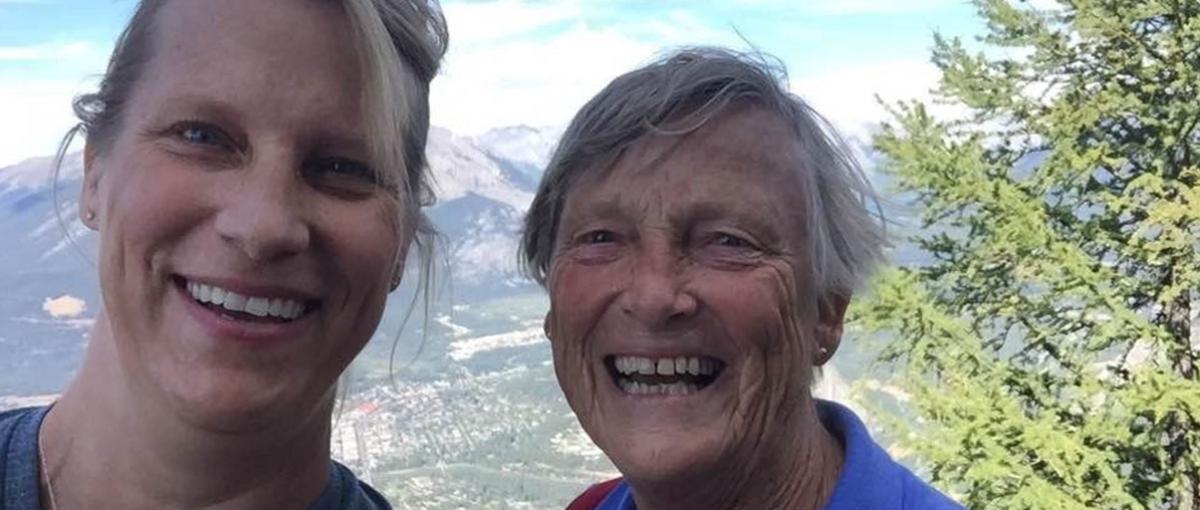Addressing the gender gap in orthopedics
A new research project will explore why female patients and surgeons are under-represented in Canadian orthopedics

July 14, 2021
By Karen Cho, Senior Communications Advisor, Covenant Health
When Adriana Rowswell completed a 10-km run with her daughter in just 55 minutes, she was exhilarated. But then her knee began to ache.
An X-ray revealed the beginnings of cartilage degeneration in her right knee, which progressively worsened. That was in 1998, when Adriana was 58 years old. Eleven years later, she underwent her first knee surgery, and then it was another nine years until she received a full knee replacement, due to osteoarthritis. That second surgery saw her waiting about three and a half years after the need for a knee replacement was identified.
The wait was not comfortable for Adriana. “Mobility during that waiting time was not always easy. I did have a knee brace for the last year, but walking was painful.”
Adriana’s experience isn’t uncommon. Because she is female, the odds of having knee surgery were not in her favour, despite women being 1.5 times more likely to develop knee arthritis than men, according to a Status of Arthritis in Canada 2019 Report.
A University of Toronto study set out to investigate whether gender bias is inherent in physicians' decisions to refer a patient for, or perform, a total knee replacement.
The results, which were published in 2008 by the Canadian Medical Association Journal, revealed that a man is twice more likely than a woman to be referred to a knee surgeon and 22 times more likely to be offered knee surgery.
Laurie Hiemstra, an orthopedic surgeon at Banff Mineral Springs Hospital since 2005 and the newly elected, first female president-elect of the Canadian Orthopedic Association (COA), says gender imbalance is a concern because it affects patient care. And while Adriana is her mother, she says her interest in this subject was sparked before her mother’s need for surgery.
“Being female is a barrier to getting excellent orthopedic care.”
Laurie believes that the inequality is rooted in history with gender perceptions being passed down through the generations.
“I really think it’s cultural. Our society has created stereotypes of how we should act, and women are stereotyped to convey certain characteristics. And women sometimes may not be good at communicating their pain, so surgeons tend to underestimate just how much that pain is bothering them.”
Compounding this inequity is the lack of female surgeons in orthopedics. The COA’s membership database indicates that only 12 per cent of orthopedic surgeons in Canada are female, which is the lowest rate for women in surgical specialties, says Laurie.
“We need to know the precise barriers women face in entering the orthopedic profession so we can understand how to achieve equity.”
Laurie, who is also a clinical associate professor with the University of Calgary, has embarked on a research project to do just that, thanks to winning the $10,000 Sharpest Knife grant competition organized by the university’s department of surgery in June.
She says the grant money will fund the foundational step for her research, which has already started with a gender survey in orthopedics. The survey has been sent to over 300 female surgeons and trainees in Canada, and the responses are currently being analyzed. That data, along with the results of an upcoming survey that will gather more in-depth responses, will inform and help build a road map for change.
“The project is a bit of a moving target. We don’t know what the answers will be, but we want to see what the main barriers are.”
Laurie says collaboration with male allies and leaders will be key to dismantling the barriers after they have been identified. She is confident that her male counterparts will be open to collaborate.
Laurie says the needle is moving with more female residents training to become orthopedic surgeons, but she adds that advocacy from male allies will accelerate the change. “You need the leadership and the ground roots working together to achieve the 25 per cent tipping point.”
She is referring to a University of Pennsylvania study that found that if at least 25 per cent of a community’s population is committed to changing what is considered the social norm, the community will see a shift.
When that time comes for her field of work, Laurie believes it will be a win-win for all orthopedic surgeons — and, most importantly, their patients.
“The culture change will benefit everyone. Having diversity is important because it brings different points of view to the practice. There will be new ideas, creative solutions and innovation that will lead to better and more successful outcomes for all patients.”
For Adriana, her quality of life has improved since her knee replacement surgery. “I continue to participate in the Ontario Masters Athletics track and field activities, I walk and hike daily, I am an active home gardener and I love to travel, especially to visit my children,” says the 80-year-old grandmother of eight and great-grandmother of four.
“Thanks to Laurie’s encouragement and help, I got an amazing new knee! That was very successful, and I am now completely mobile and pain-free.”